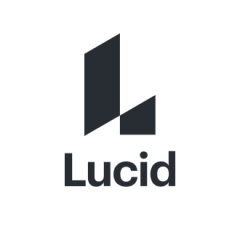What is our primary use case?
I use it for the WBS tree diagram, the work breakdown structure, and for divisional workflow mapping. I also use it for whiteboarding sessions with my team. And I have used it for an operational requirements matrix. Our company has used it for making a company organizational chart.
How has it helped my organization?
It makes collaboration easy. It makes presentation easy. The real-time collaboration is super-helpful.
It has saved me time on the order of 20 percent for project planning. Given that there are three people involved, a project manager and two project coordinators, that is significant because a project takes two to three months to plan.
Also, the ability for people to look at a diagram, rather than reading through written documents, has saved time.
What is most valuable?
- Ease of use
- Pre-existing templates
Ease of use is especially critical because if I am conducting brainstorming sessions with my team, I have to be able to quickly put things on the monitor so that I don't lose their attention and focus. Ease of use is definitely helpful when I do that. With COVID-19, we've been doing all our meetings via Zoom, so I share a screen and then I have to add things as everyone else is talking. The fact that I don't get lost within the software and am able to quickly generate visuals onscreen, so that it doesn't break the momentum, is a huge win.
It takes a lot of time for me to draw from scratch. Using a template that's already made for a specific business objective saves me about 50 or 60 percent of the time spent on the task. I search for something that is like what it is that I'm trying to do and then I just fill in the blanks. I then make slight modifications to fit within our needs. The templates are definitely a huge help.
In terms of documenting processes and systems, I would rate Lucidchart an eight out of 10. It's good for visualizing work package hierarchy. I haven't run into limitations. It has a fine balance of showing me how things could be done, yet it's flexible enough that I can make changes so that things work for my needs.
Also, when it comes to creating database schemas or modifying existing data structures, it's good visually. The visuals are there, the ease of use is there. But ultimately, it's the people who input data into those visuals who make things work. The solution doesn't do the thinking work for us. But it makes the thinking and the presentation easy, absolutely.
We're also using the web content feature, where it's a direct, live link from Lucidchart. That integration is super-helpful and super-important. It's a 10 out of 10 in importance because we don't want to keep going back and forth to upload content. We want to have live content. We make the changes in Lucidchart and they are visible in other, integrated software.
In addition, it is important that Lucidchart accommodates both Mac and PC users because we're using it for team collaboration. A lot of developers are using PC, while designers are using Mac. I am using Mac, as a project manager. If developers are a big part of the project, it's important that it's compatible with both platforms.
What needs improvement?
I wish there were a lot more automations. For instance, if I'm using a project management software to list out all my WBS, I wish Lucidchart had the functionality where it would take all the numbering and generate a tree diagram. Something like that would help so much, but right now it's still a manual task, both in the project management software I use and in Lucidchart.
I wish the project management software could do that. If it could do that, I honestly don't know if I would still use Lucidchart. But if Lucidchart could do that, it would definitely add a lot of value.
In project management, or any kind of planning, it's one or the other. We either start with the diagram and then they make it into a grid, and then ultimately into a Gantt chart; or we make it into a grid and Gantt chart, then we make the diagram. If both are required for stakeholders and participants to understand things, something has to be automated. Either the project management software could take my grid with all of the WBS numbers and provide functionality to quickly make it into a diagram or matrix. Or Lucidchart could understand those WBS numbers and simply make it into a chart or a matrix.
Whoever does it fastest will win. But ultimately I could see how project management software companies will make this functionality available.
Also, Lucid doesn't do enough knowledge-sharing on how we could use Lucidchart. Other companies send out so many emails saying things like, "Did you know you could do this? Did you know you can do that? Did you know that we can integrate with this software?" Lucid doesn't do enough of that. I think that would be super-helpful.
We have a subscription for certain projects and then we will cancel the subscription and start the subscription again for another project. The reason is that we don't know what Lucidchart can do for us. So we just use it for a project and, when the project closes, we stop the subscription. We've done that many times.
It would help to know what other usages there are and how other companies are using Lucidchart to integrate with things like Salesforce. I didn't know that you could use Salesforce and Lucidchart together. I'm curious to know how people are using it. I want to know how they are using Lucidchart for ERP. How are they using it for CRM? How are they using it for project management software? How are they using it for operational work? How are they using it for Scrum? How are they using it for Waterfall? It would be nice if they could tell their existing customers so that we could become advocates.
For how long have I used the solution?
I've been using Lucidchart on and off for about 14 months.
What do I think about the stability of the solution?
There is a lag. I think it's because it's a heavily visual software. When we put in a lot of data, a lot of visual elements, it does tend to freeze up or there's a lag, and it's really visible on the shared screen. If the document has a lot of visual elements, for us to drag one visual element to another area, there could be a few seconds of delay.
What do I think about the scalability of the solution?
Our company has 400 employees. Only about 15 or 20 use Lucidchart. They're in software development, operational work, marketing, and one person is using it for UI/UX.
How are customer service and technical support?
I have never used their technical support.
Which solution did I use previously and why did I switch?
While I myself did not switch from Visio to Lucidchart, I know people in our company who have switched. The switch was easy. I don't know in detail what they did, but I don't think they did any conversions or imports. I think they just started from scratch.
I had to work with our design team to draw out charts for. The design team uses Adobe Creative Cloud. When I said that using Lucidchart saves me 20 percent of my time, it's because there's no longer any going back and forth with the design team. I don't need their help anymore. I can just do it myself.
How was the initial setup?
The setup is very straightforward. I search for existing templates for what I'm trying to achieve. I pull two to three templates that could potentially work and make a rough draft and then run it by the team, saying, "Is this the right way to visualize the process?" We then make modifications or we try other templates.
What was our ROI?
The ROI is in time savings.
What's my experience with pricing, setup cost, and licensing?
I'm happy with the pricing of Lucidchart but I can't say I'm completely happy with it. It could be cheaper for what it offers, about $5 cheaper, or Lucid could charge $5 more and add more features, like automation. Right now, it's $15 per user per month.
If Lucid had more communication with current users about all the features that they have and all the support, it could justify charging a little more.
On the other hand, they have made their billing super-easy for users, such as for people who have to do expense reports. It is probably the easiest platform I'm using when it comes to billing for software as a service.
Which other solutions did I evaluate?
We evaluated Visio as well as Draw.io and another Adobe product.
Draw.io is missing the templates. I have to do everything from scratch. Lucidchart provides templates, live linking, and the whiteboarding functionality.
Adobe is expensive. Price-wise, Lucidchart made more sense. Compared to Adobe, price and usability—how easy it is—were the advantages of Lucidchart.
What other advice do I have?
As far as project planning, execution, project status reporting, and requirements analysis, if planning is a big part of it, Lucidchart is a must-use.
Disclosure: PeerSpot contacted the reviewer to collect the review and to validate authenticity. The reviewer was referred by the vendor, but the review is not subject to editing or approval by the vendor.










